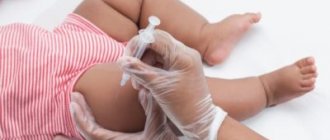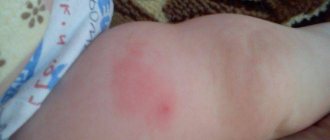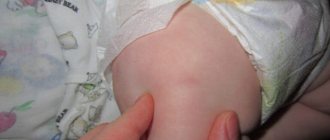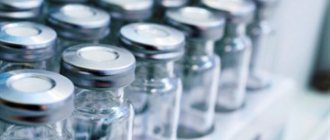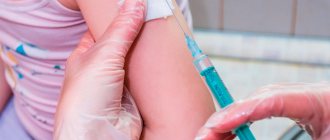DPT vaccination in many countries is a mandatory measure for the prevention of deadly infectious diseases, namely whooping cough, diphtheria and tetanus. It is recommended for children starting from infancy. Today, vaccination has many supporters who believe it helps save millions of lives around the globe. At the same time, there are many opponents of immunization, who appeal to the fact of the high probability of developing post-vaccination complications in a child. Whether or not to give DTP to a baby is the choice of the parents. It is the legal representatives of the little patient who are responsible for his health, and therefore must understand the mechanisms of action of vaccines, their side effects and contraindications to the administration of immune drugs.
Side effects
DTP vaccination is usually well tolerated by children.
In most cases, the consequences are within acceptable limits. What reaction is considered normal, how long it lasts, and when it is necessary to seek medical help, parents are informed by the procedural nurse who administers the vaccination, or by the local pediatrician.
Are common
After the vaccine is administered, the child must stay in a medical facility for at least half an hour. Very rarely, the DPT vaccine causes allergic reactions: urticaria, polymorphic rash (appearance of spots, papules, nodules) and even Quincke's edema. In case of severe allergy to the vaccine, no further vaccination is carried out.
In the first 2-3 days after vaccination, babies often have a fever (up to 39C) and their general condition worsens. Many children become whiny, capricious, refuse to eat, and are drawn to sleep. This means that the child’s body resists infectious agents and produces antibodies to them.
Give the baby an antipyretic, calm him down, be there. If the temperature no longer rises or rises to low-grade (37–37.5C), the condition returns to normal, and the child’s appetite has returned, then there is nothing to worry about. Temperature above 39C, convulsions, sharp, long-lasting crying are direct indications for calling an ambulance.
Local
There are often local reactions to DPT (by the way, they are also noted after Pentaxim). The injection site on the leg swells, becomes tight and hot, and the baby’s leg hurts after DTP. The child limps after vaccination, scratches the injection site or, conversely, does not allow anyone to touch it because it hurts. Some children cannot walk, they are afraid to stand on a leg or step on it.
Redness of the injection site is the child’s body’s response to the DTP vaccine.
It also happens that the child moves actively, steps on his foot, but at the same time limps. Do not limit the baby’s motor activity - the work of the muscle during movement accelerates the resorption of the seal. Sometimes a lump or bruise will form at the injection site. There is no need to worry when there are no other alarming symptoms (or they exist, but do not go beyond the normal reaction described above), and the baby’s general condition returns to normal. It is possible that a microvessel was damaged during the administration of the vaccine, hence the hematoma.
When should you worry? Swelling and redness of the injection site with a diameter greater than 3–8 centimeters (depending on the vaccine manufacturer) is a reason to consult a doctor.
What adverse reactions may occur after vaccination?
Many parents are afraid not of DTP itself, but of unwanted manifestations after vaccination. According to statistics, such disorders occur in approximately 50-60% of clinical cases and resolve on their own within a few days. Pathological changes can be local and general. Every person should be prepared for their occurrence, understand the principles of development and know about ways to correct such manifestations.
General reactions
Doctors attribute most of the undesirable effects in response to DTP to the normal reaction of the child’s body to the introduction of a protective solution. Among these manifestations are:
- increased body temperature;
- moodiness and tearfulness;
- dysfunction of the nervous system;
- severe allergic reactions;
- malaise, lethargy, loss of activity;
- refusal to eat food.
Very often, after vaccination, a child’s temperature rises. Such a reaction to DTP can be of three degrees of severity:
- mild – increase in temperature values up to 37.50 C;
- medium – temperature rise to 380 C;
- severe – hyperthermic reaction up to 400 C and above.
Sometimes after DPT vaccination, a rash of an allergic nature, urticaria or angioedema occurs throughout the body. Such manifestations are observed in allergy sufferers. To avoid the development of pathological symptoms after a vaccine injection, doctors recommend that children with hypersensitivity to drugs exclude the pertussis component of the immune suspension, which has the most pronounced allergenic properties.
Local manifestations
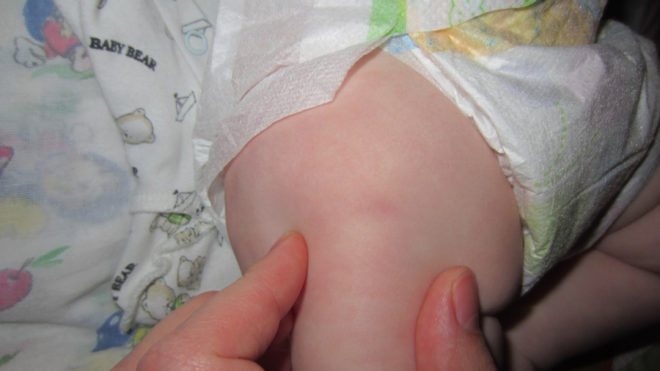
In addition to general disorders, vaccination may be accompanied by the appearance of local changes. At the injection site, the following often occur:
- local swelling and redness of the skin;
- lump formation;
- painful sensations of varying intensity.
It happens that after the injection of the vaccine, the baby limps on his leg. At the same time, he continues to move actively and does not show any other signs of illness. This effect of vaccination is associated with the formation of a temporary infiltrate in the thickness of the muscle tissue, which affects the nerve fibers, which entails the appearance of lameness after vaccination.
Causes for concern are situations when a child limps after DPT for more than 5 days or this pathological condition is worsened by impaired motor activity. In such situations, the patient should visit a doctor and determine the true causes of the disease process.
Should I do it or not?
In a word, the reviews are extremely contradictory, often frightening with consequences, even leukemia. It is known that children should be tested for drug compatibility before vaccination, but this is not usually practiced in medical institutions. Therefore, it is worth studying the opinions of real people and the opinions of doctors. And be sure to consult with the pediatrician who is monitoring the baby. But it should be remembered that reviews of vaccinations that went absolutely fine are left very rarely, while one case of complications “sells in huge numbers.” In any case, the decision about whether and when to get a particular vaccination is up to the parents.
How to proceed?
After administering DPT, an antipyretic should be given to prevent an increase in temperature and to prevent convulsions in young children, which can occur against a background of high temperature. Also, all antipyretics relieve pain and relieve inflammation.
The use of these drugs during vaccination will help relieve the child of pain, which can be very severe at the injection site, and also protect against swelling in the same place.
If a child has an allergic reaction, it is necessary to use antiallergic drugs. Neither antipyretic nor antiallergic drugs affect the development of immunity or the effectiveness of this vaccine.
If a child has allergies or diathesis, he should be given a maintenance dose of an antihistamine before vaccination. Some pediatricians advise giving the baby an antipyretic after vaccination, without waiting for any complaints. First aid will relieve swelling of the injection site and relieve pain in the child’s leg after DTP vaccination. What should I do if the temperature rises during the day? You need to put another candle or give some kind of antipyretic. Be sure to light the candle at night, otherwise the fever may start again. You also need to take your temperature several times at night.
If it is high, you need to put the suppository again and, without ceasing, give antihistamines (in the prescribed dosage). The next day, if the temperature rises again, you need to put a candle and continue to give the antiallergic drug. Medicines to relieve fever should be given only at elevated temperatures, but if it has risen slightly, then you can abstain. After all, the vaccine works in the body, and the temperature may be 38.3, this is normal. It can rise in the first 2-3 days after vaccination, and if it lasts longer, then you need to look for another source of its appearance.
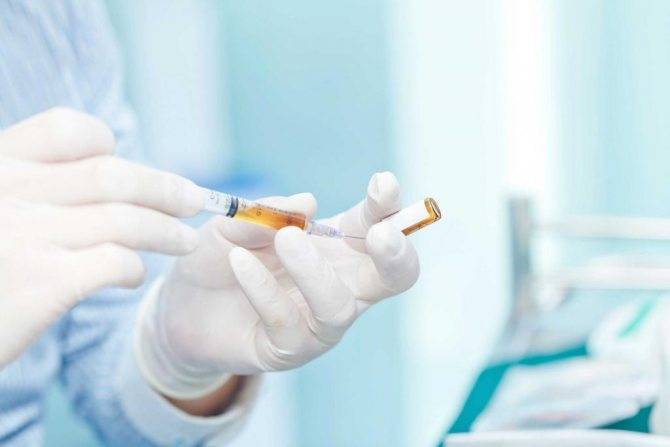
When is soreness considered normal?
To determine how serious the symptoms may be when there is pain in the leg, you need to pay attention to the condition of the baby.
General symptoms include:
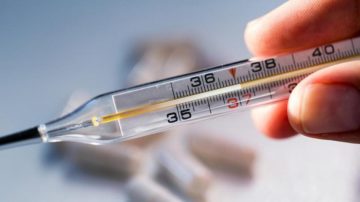
- temperature increase;
- lack of appetite;
- moodiness and apathy;
- coughing attacks;
- pain in the area of vaccination.
Most experts are of the opinion that if a child cannot stand on his leg, then in any case he should be shown to a pediatrician.
However, the reactions described above do not pose a threat to health if:
- the lump does not exceed eight centimeters in size;
- the temperature remains around 38 degrees Celsius.
During the normal course of the post-vaccination process, such consequences go away on their own. During this period, the child just needs to pay more attention. There is no need to apply lotions at the vaccination site, and it is also important to protect it from scratching .
To prevent the baby from touching the bump, you can alternatively bandage the leg, which will help prevent damage to the wound. It is also important to observe the drinking regime and meals.
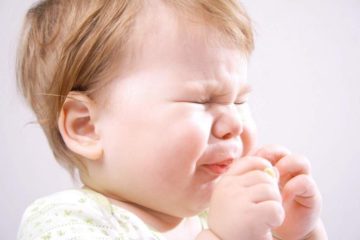
Coughing is also considered a normal reaction and usually indicates chronic processes in infants. In this case, you should not make any attempts at treatment either, but you must inform your doctor.
A child's leg hurts after DTP vaccination
admin 29 – December – 2016
Of all the vaccines included in the childhood vaccination schedule, the DTP vaccine causes the strongest response from the body. Since the injection is given to children in the thigh, pain in the leg and swelling at the injection site are quite common reactions to this vaccination.
DTP vaccine: why it is given in the thigh, and what reactions there are to it
The adsorbed pertussis-diphtheria-tetanus vaccine protects the child from three dangerous infections: whooping cough, diphtheria and tetanus. According to modern standards, this vaccination is given only in the leg (thigh), and there are two very good reasons for this. Firstly, in a person’s buttocks there is a sciatic nerve, which is extremely undesirable to hit with a syringe needle. Secondly, it has been proven that the effectiveness of the vaccine is higher when it is administered specifically into the thigh muscle, since when vaccinating into the buttock, especially if the baby is well-fed, there is a high probability of the drug getting into the fat layer instead of muscle tissue, which makes it difficult to absorb the vaccine, and this leads to reducing the effectiveness of vaccination.
Diphtheria and tetanus toxoids included in the vaccine are easily tolerated by children, and the killed pertussis microbes contained in the drug are responsible for responses to DTP. Today, however, a purified vaccine has already been developed and has proven itself to be excellent, in which pertussis microbes undergo special treatment and no longer cause any adverse reactions, but such a vaccine is many times more expensive, and therefore is not used in our country for free vaccination.
The most common reactions to the DPT vaccine are fever, tearfulness, loss of appetite, as well as hardness at the injection site that does not go away for a long time, and pain in the “injected” leg. Less commonly, swelling and redness of the thigh where the injection was given develops.
My leg hurts after DPT vaccination, what to do?
Swelling of the “injected” thigh and pain in the leg for 7-8 days after vaccination are considered normal, and hardening at the injection site can last up to three to six weeks. If the child experiences severe discomfort, then it is imperative to give him a children's painkiller, for example, Nurofen, which is approved for children from three months. You can apply a cool compress to the injection site. To do this, you need to put a clean, soft diaper in a plastic bag and keep it in the freezer for a few minutes. Then the diaper is removed from the bag and applied to the area of redness on the leg. After vaccination, if a local or general reaction occurs, you can also give the child an antihistamine.
A complication after vaccination is severe pain in the “pricked” leg, accompanied by swelling and redness with an area larger than the area of a matchbox. Symptoms of the complication also include a high temperature of the whole body or a local increase in temperature, when the leg into which the injection was made becomes hot to the touch, as well as suppuration at the injection site. This reaction of the body is no longer the norm, and in this case the child may require not only a consultation with a pediatrician, but also the help of a surgeon.
However, such severe reactions to the DPT vaccine are extremely rare, and even they are quickly stopped by doctors.
https://youtube.com/watch?v=5rXbK6JlbVo
Where is the vaccine given?
Vaccination is carried out 4 times, according to the generally accepted scheme, for children aged 3-6 months with an interval of 30 days. This period may be extended. Revaccination is carried out after a year. So, for example, when the drug is administered at 11 months, revaccination is done at 23 months.

The graft is usually placed in the leg. If the baby is under two years old, then the risk of damage to the sciatic nerve, vascular formations or nerve trunks increases, which is absolutely not allowed.
There is a large amount of adipose tissue in the gluteal region, which prevents the rapid absorption of the vaccine, as a result of which the correct formation of immunity may not occur.
Representatives of the World Health Organization recommend choosing the injection site in small patients in the hip area, which will avoid many serious complications.
What should I apply to the injection site to ease the baby’s condition?
To eliminate pain and inflammation in the DTP injection area, you can use special external pharmaceutical preparations or ointments, homemade solutions.
Supporters of official medicine oppose traditional methods. But some parents still prefer non-traditional means due to their harmlessness, effectiveness and accessibility.
From pharmaceutical products, the following ointments can be used to relieve pain:
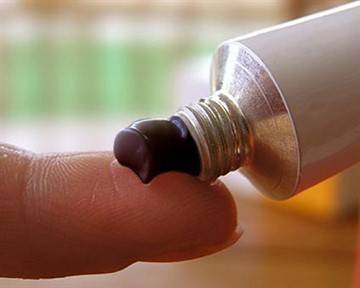
- Vishnevsky. The product quickly eliminates pain, swelling, and redness. Helps well with purulent processes;
- Heparin. It is used if a vein was damaged during the injection;
- Rescuer. Relieves unpleasant symptoms by reducing inflammation. The drug is safe in composition;
- Menovazin. Eliminates pastiness;
- Troxerutin. Reduces the severity of edema;
- Traumeel. Has healing properties.
You can also make a compress with aspirin; to do this you need to follow a number of steps:
- take an aspirin tablet and crush it;
- combine with two tablespoons of alcohol;
- apply the mixture to a piece of gauze folded several times;
- lubricate the skin seal with vegetable oil to avoid the development of burns when the epidermis comes into contact with ethanol;
- apply gauze to the painful area and cover with film on top;
- secure the compress with a band-aid;
- keep for 4 to 8 hours.
Already during the first manipulation, the pain will decrease. The lump will completely disappear in a few procedures.
According to parents' reviews, folk methods help to remove unpleasant symptoms:
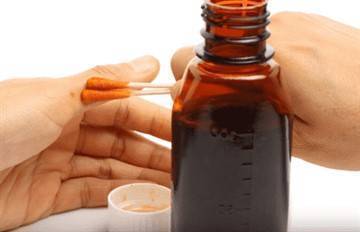
- application of iodine mesh. Relieves inflammation and swelling. Use this method several times a day.
- application of cabbage leaf to the injection area;
- applications with “live” yogurt or bio-kefir;
- compress of egg-cream-honey mixture. A tablespoon of honey, butter and one chicken yolk are mixed and applied to the painful area. Cover the top with gauze and a plastic bag. The product should be kept for several hours;
- lubricating the pine cone with honey.
For severe pain, ointments and traditional methods may be ineffective. In this case, oral medications Analgin or Nurofen are used.
A child’s leg hurts after DTP
Of course, DPT vaccination is a necessary thing. After all, diseases such as tetanus, diphtheria, whooping cough are extremely dangerous and can have irreversible consequences. Actually, this is why children under the age of fourteen are given the DPT vaccine 6 times.
However, we cannot deny the possibility of adverse reactions occurring after vaccination, which is why many parents refuse to vaccinate their child against these deadly diseases. In particular, you can often hear complaints that after DTP vaccination the child’s leg hurts, he limps and cries. Is this phenomenon considered a typical side effect, and what to do in such cases, let's find out.
Experienced mothers know that DTP is one of the most poorly tolerated vaccinations, and pediatricians are probably already accustomed to complaints from parents that after the child received the DPT vaccine, his leg hurts a lot, he limps, and swelling appears at the injection site and the temperature has risen.
Indeed, slight redness, swelling (sometimes more than 8 cm in diameter), pain - all these phenomena are considered local complications that do not go beyond normal limits. In this way, the baby’s body reacts to the administered substance; in addition, such a reaction indicates that the process of immunity formation has begun.
Typically, pain, swelling and inflammation should subside within a few days
However, during this difficult period for the baby, it is very important that the mother remains calm and tries to alleviate his condition. You can relieve painful symptoms with massage, special compresses (except alcohol), and ointments.
Any medications should be used with caution and only after consulting a doctor. Under no circumstances should parents escalate the situation; an already worried baby will quickly “catch” mommy’s mood and become even more capricious.
By the way, it is worth noting that parents most often turn to doctors with complaints that the child’s leg hurts after the 3rd revaccination of the DPT vaccine.
Mantoux norm in children - sizes All children know about the “button”, because they are tested for the Mantoux reaction every year
Tuberculosis is a dangerous and very common disease, which is why it is so important to monitor residual immunity after a BCG vaccination given in the maternity hospital, and, if necessary, carry out revaccination.
Adenoiditis in children - symptoms and treatment Adenoiditis is usually called inflammation of the adenoid vegetations, which often occurs against the background of infectious diseases. If the problem is ignored, the disease can progress to a severe stage, so it is extremely important to monitor the growth of adenoids and treat exacerbations.
Temperature in a child after vaccination Temperature is a common condition after vaccination, because this is a protective reaction of the body, which at this time develops immunity to the disease for which the vaccination was carried out
Let's take a closer look at this topic.
Polio vaccination schedule for children Polio is a terrible disease that cannot be effectively treated, so the only preventive measure is to vaccinate the child. This issue has become especially relevant recently, when the disease is being recorded again in some regions of the country.
After DTP vaccination there is thickening and redness: what to do with a bump on a child’s leg?
DPT is a vaccine against whooping cough, diphtheria and tetanus that is given to all children according to the immunization schedule.
Why are parents often afraid of this vaccine and its consequences? This causes unwanted effects in many children: fever, redness, swelling of the legs and buttocks.
And how many days after vaccination a child can have unwanted symptoms, how dangerous they are, is often not known to young mothers.
INTERNATIONAL: How do children of all ages cope with DTP vaccination?
Doctors advise not to neglect the prevention of these diseases, since their consequences are more severe than the side effects of the vaccine. If you have properly prepared for the procedure, you can avoid many inconveniences.
After the ADHD vaccine, the child may also have a bunion on his leg: Is it possible for the child to be vaccinated against ADHD?
Normal body reaction to DTP vaccination
Various medications are used to immunize children: DPT, Pentaxim, Infanrix IPV, Hexa Infanrix, Tetracoccus and Bubo-Cock.
Pentaxim protects against Haemophilus influenzae and polio in addition to whooping cough, diphtheria and tetanus, Hex Infanrix protects against polio and hepatitis B.
The injection is given on a specific part of the body: infants receive the vaccine on the outer thigh, older children and adults receive the vaccine on the upper arm.
READING: Pentaxim vaccine scheme
A reaction to a vaccine often occurs in an infant. Side effects that occur after vaccination and are not health threatening crumbs.
- temperature increase;
- runny nose, cough;
- loss of appetite;
- weakness, lethargy;
- diarrhea, vomiting, colic;
- redness or swelling at the injection site.
Loss of appetite, runny nose, weakness, drowsiness, mild swelling; Redness is a symptom that is common after ACD but is not dangerous.
What should I do if my temperature rises after ACD?
The leg prick usually hurts for two to three days. Even after the injection, an allergic reaction to the skin sometimes occurs.
The allergy occurs after the second or third injection.
If the injection site is red, the child is given an antihistamine such as Fenistil or Zirtek for relief (we recommend reading: How to administer Fenistil before the ACD vaccine).
WO: How do I administer Fenistil to my child?
Prophylaxis helps to avoid unwanted effects after AKD vaccination, such as lump formation.
Prepare your child for vaccination (start taking antihistamines three days before vaccination) and make sure that the procedure is hygienically correct.
The child's health will be closely monitored for several days after vaccination. It is not recommended to urinate or rub the injection site on the first day.
WARNING: Can I bathe my child immediately after receiving the AKD vaccine?
Swelling of an area of the thigh or swelling of the entire leg
It may happen that the thigh area where the medicine was injected or the child's entire pedicure becomes swollen after the ACD or Pentaxima vaccination. This is the body's immune response, which means the vaccine has started working. How long the swelling does not disappear depends not only on the child’s immunity, but also on how well the procedure was carried out.
Infiltrate (bump, lump) at the injection site
Sometimes the swelling that occurs after ACDS does not go away within two weeks. If the lump is not very large (no more than 8 cm), it does not pose a danger, but is a natural reaction of the body. To relieve leg pain and reduce thickening, doctors recommend using simple remedies such as making an iodine mesh at the site of infiltration.
Redness and itching
In the area where the AKDS vaccine was administered, there is slight redness (a red spot with a diameter of 2-4 centimeters) and itching caused by mild local inflammation as a result of the procedure. Again, this is nothing to worry about and the redness around the injection will subside within a few days. If the skin is very red, apply a special anti-inflammatory ointment.
WO: When is the 4th ACDC vaccination given and how is it tolerated? Negative reaction to vaccination
Abscess as a complication after vaccination and methods of its treatment
If after vaccination a child develops a tumor with pus on the thigh, a cold abscess develops - a purulent inflammation of the tissue. This usually happens when hygiene standards are not followed.
There is an infection at the injection site that causes inflammation. An infiltration filled with pus appears under the child’s skin. The lump on the leg does not disappear on its own.
It needs to be opened and washed, the operation is performed by a surgeon.
A post-vaccination abscess is dangerous as it can burst at any time. In this case, its contents enter closed cavities, which leads to a purulent process in them. After surgical manipulation, the patient is prescribed antibiotic therapy.
Helping a child with a pronounced reaction of the body to DTP
To reduce unpleasant symptoms that occur after vaccination, you can use these options to help your child:
- for massage;
- for installing a compress at the injection site;
- to lubricate the leg, where it swells, with a special ointment.
Ointments and gels to eliminate bumps and redness
If after vaccination the child’s temperature rises above 38.5°C, the redness has increased, and the stem is very swollen, you can apply Troxevasin gel or a compress with novocaine to the affected area. This will relieve redness and relieve pain. You can also give your child the antipyretic drug Nurofen or paracetamol syrup. We could administer a paracetamol rectal suppository.
If the filling that appeared after ACDS does not disappear, then
- for allergic itching, swelling and redness, it will help to reduce Fenistyl in drops, for children over 1 year old - 5 drops of Zirtek 1-2 times a day, and for children over 2 years old - Claritin syrup per teaspoon once a day;
- Eskusan ointment and troxerutin gel improve blood circulation and accelerate wound healing;
- Rescue ointment reduces inflammation and absorbs nodules;
- Heparin ointment improves tissue microcirculation and relieves swelling.
Other ways to combat post-vaccination reactions at home
Cabbage leaf
Often parents resort to folk remedies if their child penetrates the injection site:
- curd compression. The product should be heated in a water bath, wrapped in a soft cotton cloth and applied to the seal until the curd has cooled.
- Honey compress. Heat the honey, add the egg yolk and a little olive oil. Mix everything, form a cake, wrap it in cotton cloth and apply it to a lump, cover the top with parchment.
- cabbage leaf Attach to infiltration before bed.
- Compress made of honey and flour. Mix heated honey and rye flour in equal parts. Mix the cake and apply sealant before bed.
- Soda compress. Place one teaspoon of baking soda in a glass of warm water, soak a handkerchief in the baking soda solution and tie the swelling until the bandage dries.
Do not use foil or plastic bags when applying the compress. They create a greenhouse effect rather than exacerbating inflammation.
Local side effects
Unfortunately, DTP is considered a difficult vaccination, and not all children can safely tolerate it. In addition to general ailments and changes in behavior, there may be severe local reactions in the place where the injection was given:
- The appearance of redness.
- Strong pain.
- The leg is swelling.
Please note that pain with induration is considered normal if the temperature is not higher than 38 degrees. The pain appears due to the fact that aluminum hydroxide enters the muscle; it is responsible for the immune response
This compound helps to keep the suspension in the place where it was introduced for a long time.
A reaction is considered normal when the injection site swells and turns red, while the child can calmly stand on his leg, does not act up, does not cry. The inflammatory process should not spread more than 5 cm. When the inflammatory area increases significantly, the child cannot walk and begins to limp - this is a complicated reaction.
Please note that when the baby begins to limp and pulls his leg, this means that the resorption of the infiltrate is happening too slowly. Swelling, pain and redness are common reactions
To restore motor function, you need to do a special massage.
How long can a child limp after vaccination? Usually after a week, lameness disappears, and the infiltrate is absorbed into the body tissue. If the swelling is too strong and the leg is hot, you need to urgently consult a surgeon. Perhaps he will prescribe a special medicinal ointment (often Fenistil gel), a special compress.
After DTP vaccination, the child’s leg hurts and he is limping – what should I do?
According to many doctors and parents, DTP vaccination is one of the highly reactogenic vaccines. The drug contains tetanus and diphtheria toxoids, killed pertussis germs. The product also contains aluminum hydroxide, formaldehyde and merthiolate.
This composition can sometimes cause adverse reactions. In some cases, children experience pain after DTP in the injection area and in the abdomen. It is useful for parents to know how to help their baby when such unpleasant symptoms appear.
How to care for the injection site on a child’s leg?
To reduce the likelihood of a lump forming after vaccination with Pentaxim to a minimum, you need to properly care for the puncture site. Doctors give all recommendations for handling the baby before or after the manipulation.
Features of caring for the injection area:
- Do not wet the puncture until the wound is completely healed. Since Pentaxim is injected into the thigh for children under two years of age, it is better not to bathe the child for several days. This time period is quite enough for the wound to heal and for infection to not penetrate into it;
- do not smear the injection area with external medications without consulting a doctor;
- dress the baby only in clothes made from natural fabric. Otherwise, an allergy may develop;
- Do not let your child rub or scratch the puncture.
Is it necessary to lower the temperature after vaccination (re-vaccination)?
In healthy and strong children, the period after DTP vaccination may be asymptomatic. Sensitive babies often develop a fever. This is a normal reaction of the body to the administered drug. Parents are wondering whether it is worth lowering the temperature. It all depends on her level.
Hyperthermia is of three types in severity:
- weak (thermometer shows from 37.2 to 37.5);
- moderate (values range from 37.5 to 38);
- severe (on the thermometer above 38).
If the temperature does not rise above 38 degrees and the child feels relatively normal, then there is no need to bring it down. Severe hyperthermia increases the risk of your baby developing seizures.
To prevent such conditions, antipyretic drugs should be given.
High fever is usually accompanied by the following symptoms:
- vomiting;
- lack of appetite;
- headache;
- chills;
- capriciousness.
Means for normalizing temperature indicators are available in the form of tablets, capsules, powder, suppositories, and syrup. The last two forms are usually used to treat children. Many drugs have significant side effects and are approved for children over a certain age.
Efferalgan candles
Of the antipyretics, the following are allowed for use in infants:
- Paracetamol
- Efferalgan:
- Nurofen;
- Panadol;
- Cefekon D;
- Tylenol.
What should you do if your child is capricious after the DPT vaccination and cries a lot all day?
After vaccination, the child's mood may change. He becomes irritable, constantly capricious, and cries. As a rule, babies cry and cry immediately after the vaccine in question is administered.
Usually they calm down immediately after contact with their mother, but often the crying drags on for several long hours. This may occur in one case in a thousand children. During such a hysteria, the child takes frequent and deep breaths. Because of this, brain hypoxia may develop. This becomes the main cause of unbearable headaches.
Parents should be alerted to the child's incessant crying. Especially if it lasts for three or more hours. In this state, the baby’s body quickly evaporates moisture, which can lead to dehydration. In this situation, it is necessary to do everything possible to ensure that the child calms down as soon as possible.
To stop the baby from crying, you need to give him warm water. Babies may cry little by little, but very often. This is a common reaction following complications and a painful lump at the injection site.
As a rule, tears appear in the child’s eyes every time he feels severe pain in the lump. This is a completely understandable reaction, with the help of which the baby shows others his condition.
Possible adverse reactions to DTP vaccination
Since the first vaccination is usually given at three months of age, the injection site is chosen on the outer side of the thigh - there is less fatty tissue here, which means the drug is absorbed faster. That is why parents often turn to the pediatrician with complaints that the leg is swollen after DTP. However, slight swelling is a normal reaction of the child's body to the vaccine.
Subsequent injections are administered according to a special schedule: the first three times with an interval of 1.5-2 months, the fourth time – after a year. For older children and adults, the vaccine is given in the shoulder.
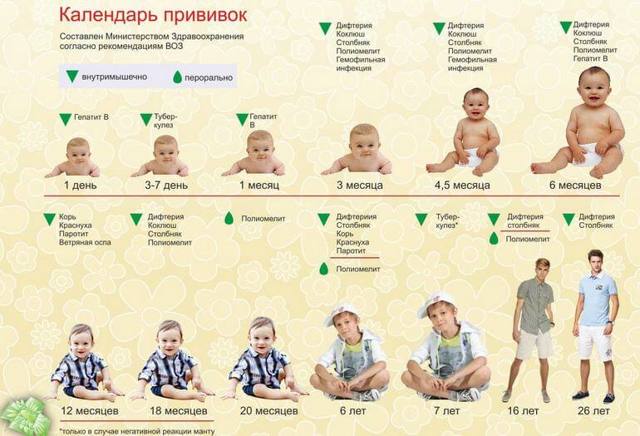
Other undesirable effects may include:
- lack of appetite;
- colic, diarrhea or vomiting;
- fever, weakness;
- cough and runny nose.
Typically, side effects of the injection are observed for 2-3 days. During this period, it is necessary to closely monitor the child’s health: during the day you should not wet or comb the injection site.
And if the temperature rises sharply to 38.5o or higher, you need to urgently consult a doctor! Severe diarrhea and vomiting should also not be ignored - immediately report these complications to your pediatrician.
Child's leg is swollen
If your child's leg is swollen after a DTP vaccination, do not rush to panic. An inflamed area with a diameter of up to 3 cm should not cause concern; on the contrary, such a reaction can be considered a good sign - the vaccine has begun to act, which means the child’s body acquires immunity. If all sanitary standards were observed during the procedure, the swelling will soon subside on its own.
Lump (seal) at the injection site
Sometimes a painful lump appears at the injection site, the formation of which is caused by infiltration. It can accumulate for up to two weeks, and is also considered a natural reaction to the administration of the drug. Small lumps after vaccination (about 8 cm) are normal. An iodine mesh will help reduce the accumulation of cells, blood and lymph, as well as reduce pain.
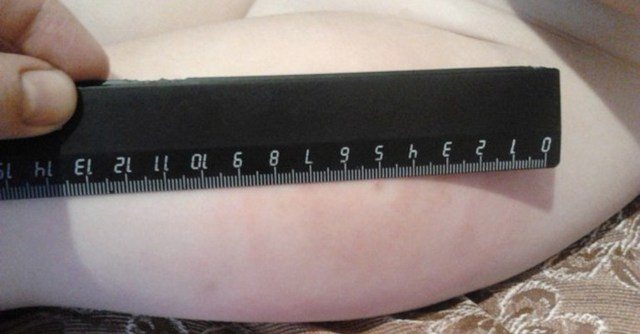
Redness, itching
If the vaccination site turns red, then an allergic reaction to the vaccine is occurring. There is no need to worry; after a few days the redness will subside on its own. To alleviate the condition, you can use anti-inflammatory ointment.
Itching and redness most often appear after the second or third vaccination, while such a reaction is less typical for the first procedure.
After consultation with a pediatrician, the child can be offered antihistamines - Zyrtec, Fenistil.
What to do to eliminate the side effects of the injection
There are a number of methods to combat the unpleasant consequences of vaccination against diphtheria, tetanus and whooping cough. Possible treatment may include folk remedies, medications (ointments, gels, drops, antipyretics), massage.
Drug therapy
When the temperature rises to 38.5o, antipyretics are given. For a small child, Nurofen or Panadol syrups are best suited. Medicines can be given from 3 months, they have a pleasant taste and last a long time. Rectal suppositories with paracetamol also help well.
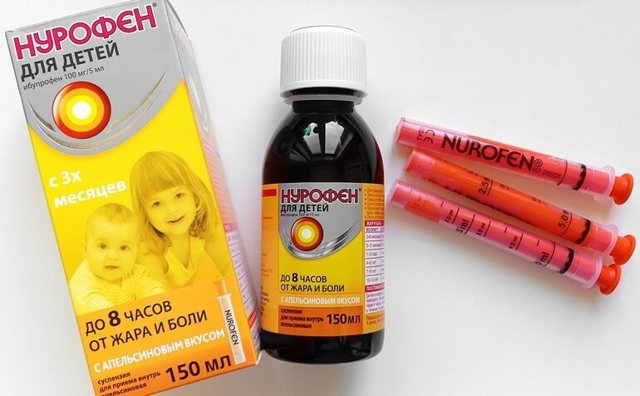
Spasatel and Traumeel ointments effectively deal with lumps and lumps; they are applied before bedtime. Draw an iodine grid on your baby's skin to help relieve pain.
To improve blood circulation, Troxerutin gel is suitable; the drug is applied with light massage movements. Heparin ointment will help remove swelling.
Itching, swelling and redness are effectively relieved by Fenistil drops or gel. The active ingredient of the drug, dimethindene maleate, has antihistamine properties. Zyrtec drops have a similar effect. They are prescribed to children from 2 years of age.
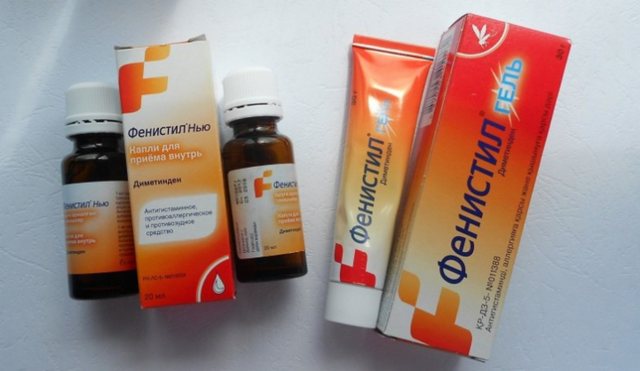
Before using any medicine, be sure to consult your pediatrician. Dosages are selected strictly individually, self-medication is unacceptable!
Traditional methods
In addition to medications, traditional methods will help reduce the unpleasant consequences of vaccination, among which the most popular is a compress after DPT.
Under no circumstances should you use alcohol or alcohol-containing preparations as a compress! Also avoid using cling film and other materials that can create a greenhouse effect and, conversely, worsen the condition.

- Natural materials are best. A cotton cloth is soaked in a soda solution and applied to the inflamed area of the skin. Leave until completely dry. To prepare the solution, 1 tsp. soda is diluted in a glass of warm water.
- For babies, a fresh cabbage leaf is applied to the leg. It reduces the inflammatory process and relieves swelling. The leaf should be warm, so the healing properties will appear faster. If the cabbage has been in the refrigerator for a long time, let it warm up first.
- A honey compress after DPT has proven itself well. Add egg yolk and a few drops of olive oil to slightly warmed honey. The resulting composition is mixed, wrapped in cotton cloth and applied to the sore spot. The top of the compress can be covered with paper.

Massage will help to avoid stagnation; light hand movements begin immediately after the injection. This improves blood circulation, preventing the accumulation of infiltrate.
Who should not get the DPT vaccine?
Despite the obvious benefits of DPT vaccination, there are a number of contraindications to its use.
Doctors do not recommend an injection if:
- the baby was born prematurely and spent some time in an oxygen pressure chamber;
- the child has recently suffered an illness and has not had time to restore immunity;
- the baby is currently suffering from acute respiratory infections;
- any of the parents is intolerant to this vaccine.
Depending on the contraindications, a decision is made to postpone the vaccination date or replace DTP with another drug. Among analogues, the most common are the French Infanrix and the new acellular vaccine Pentaxim.
Pentaxim, in addition to the triad - whooping cough, diphtheria, tetanus - protects against polio and hemophilus influenzae infection. Infanrix, in turn, is easier to tolerate, because practically does not cause side effects. However, remember that this drug requires special storage conditions at a certain temperature, so it makes sense to purchase it immediately before vaccination.
How many days does it last
The duration of hyperthermia depends on the following indicators:
- individual reaction of the body in response to the introduction of an antigen;
- sensitivity of the immune system, allergies;
- mild, moderate or severe hyperthermia;
- correct administration of the drug, hygiene;
- the presence of other acute and chronic diseases affecting immunity;
- the addition of concomitant diseases immediately after vaccination or 1-2 days before it.
If health is normal, the immune system develops correctly, and there are no other diseases, then mild hyperthermia lasts for the first 24 hours.
https://www.youtube.com/watch?v=ytabouten-GB
In case of individual sensitivity to the components of the product, it can persist for up to 5-7 days. Usually the figure does not exceed 38 °C.
If a complication occurs, the presence of another disease or allergy, the indicator can reach high levels, and hyperthermia lasts a long time. It does not go away until the pediatrician provides treatment.
Preparing for DTP
During vaccination, the child must be completely healthy. Before vaccination, he is examined by a doctor, first of all, he measures his temperature. If the baby has recently been sick, then at least two weeks should pass after complete recovery. It is advisable to donate blood and urine before the procedure.
The child should be calm, well-fed, but not overfed. If the baby is on guard duty, the mother should not eat new foods during the vaccination period. When the baby has already become acquainted with adult food, his diet during this period should remain unchanged.
Note! Vaccination is stressful for the body; there is no need to combine it with other exciting activities and events. Sometimes doctors recommend giving children antihistamines two days before the procedure.
This will reduce the risk of negative manifestations. With DPT, compared to other vaccinations, side effects are observed more often. If a child does not tolerate the first vaccination against whooping cough, diphtheria and tetanus, after a month and a half he is recommended to be given a lighter drug, namely ADSM, which is characterized by the fact that complications practically do not occur after it. This is due to the absence of the pertussis component. It is he who is responsible for the severity of the reaction
Sometimes doctors recommend giving children antihistamines two days before the procedure. This will reduce the risk of negative manifestations. With DPT, compared to other vaccinations, side effects are observed more often. If a child does not tolerate the first vaccination against whooping cough, diphtheria and tetanus, after a month and a half he is recommended to be given a lighter drug, namely ADSM, which is characterized by the fact that complications practically do not occur after it. This is due to the absence of the pertussis component. It is he who is responsible for the severity of the reaction.
Preparation
To prevent the development of possible side effects, you need to know how to properly prepare your child for vaccination.
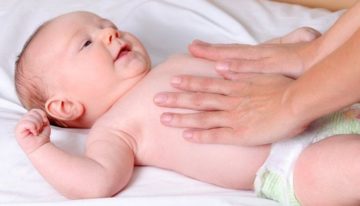
The vaccination is given on an empty stomach and after cleansing the intestines, for which a light abdominal massage is done after waking up on the day of vaccination.
There is no need to dress the baby too warmly; overheating after the administration of the medication is not allowed.
If you are prone to allergic reactions, it is important to take a course of anti-allergy medications a few days before the procedure.
What behavior of a child after vaccination is considered normal?
According to the vaccination calendar, the DTP vaccine is administered to the child exactly four times. It is administered for the first time at three months. After this, you need to monitor the baby’s condition. If no complications arise and the child feels well, then two more vaccinations need to be given.
They are allowed only if there are no contraindications. They should be done with a time interval of forty-five days. But the last DPT vaccination, which is called revaccination, must be done at one and a half years.
As for the vaccine itself, three drugs are introduced into the child’s body at once. They all unite to perform a common task - creating a strong immune system that will resist dangerous diseases.
The most aggressive of these three vaccines is pertussis. The whole point is that traces of pertussis toxin and lipopolysaccharide are often found in it. This vaccination is one of the most dangerous, as there is a threat to the child’s life.
It must be remembered that the child’s behavior after vaccination may be different. After the vaccine is administered, his condition should be monitored. Often, due to some reasons, the reaction to it can be severe.
DPT vaccine
According to statistics, approximately 95% of all toxic reactions to drug administration occur in the first twenty-four hours. To be fair, it should be noted that this is a rather painful reaction to the vaccine, which is extremely rare.
When it comes to your own child, even one case in a million is already a lot. After the procedure, the baby's body temperature may rise. Most likely, the pediatrician will warn the mother about this symptom.
The temperature rises within a few hours after the vaccine enters the child’s body. This body reaction is considered absolutely normal and acceptable. Of course, we are talking about those cases when the temperature is not higher than 37.5 degrees Celsius.
If its level rises to 38, then you need to give the baby an antipyretic drug. Before administering the vaccine, you need to ask your pediatrician what to do if your temperature rises.
He will recommend the most suitable drug in this situation. It must be remembered that the DTP vaccine can cause a temperature rise of up to 39 degrees Celsius.
That is why you need to carefully monitor the child’s condition. If your body temperature continues to rise after taking an antipyretic, you should immediately call an ambulance. In this case, we are talking about the appearance of complications during the administration of the vaccine. This is very serious and there is no need to delay contacting a doctor.
Please note that an increase in body temperature can also be accompanied by sleep disturbances and lethargy of the baby. If these symptoms persist for several days after vaccination, then this is the norm.
It is acceptable for symptoms to persist for three days, but no more than that. If symptoms do not disappear, you should urgently visit a pediatrician.
lumps at the injection site
You should also not heat the injection site. This compaction can persist for one month. Normally, it goes away on its own. It also does not pose any danger to the child’s life.
In this case, you need to monitor the child’s feelings. If touching the injection site causes pain or discomfort, then you need to visit a specialist.
Don't put off visiting the doctor. Especially in cases where the compaction volumes become larger and exceed the size of a small pea.
After administration of the DTP drug, a cough often appears. Despite the fact that one of the components of the vaccine is pertussis germs, coughing after administration of the drug is not the norm. If you notice this symptom, you should immediately consult a doctor.
During this period, the protective functions of the child’s body cannot cope with the administered vaccine. This makes it easier for other infections to enter the baby’s body. A severe course and even the occurrence of dangerous complications become more likely.
Causes of leg pain
In approximately 25% of all cases, after DTP has been administered, a local adverse reaction may occur, accompanied by the formation of a lump and redness of the skin at the injection site.
The condition can be caused by:
- compression of muscles and subcutaneous tissue under the influence of the drug;
- inflammation occurring in the body, which contributes to the appearance of a lump;
- improper administration of the vaccine;
- penetration of infection through a puncture.
The first symptom of negative consequences is that the child cannot stand on his leg.
